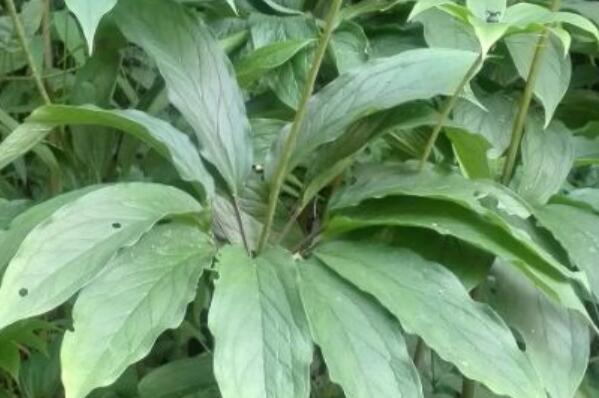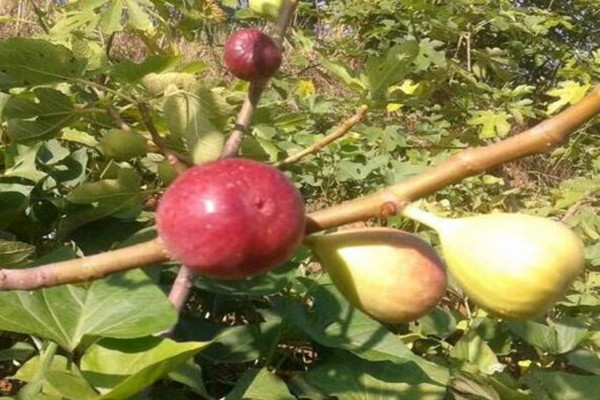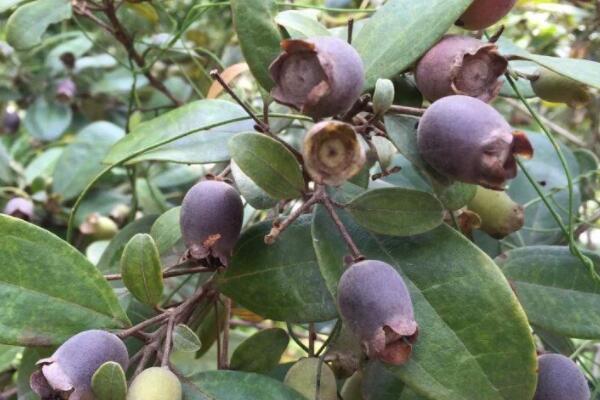How much is the price of one branch of seven leaves at 2018 per jin? What are the planting prospects? What are the technologies?
Seven-leaf flower is also known as Arenaria, Chi Xiu, Chongtai Root, Zhengxiu, Caohe Che, Chongtai Grass, White Gansui, Jinxian Zhonglou, Worm Lou, Jiudaoku, Mandarin Duck Worm, Branch Flower Head, Screw Seven, Conch Seven, Dengtai Seven, Baihe Che, Luotuo No.7, Tusanqi, also known as Horse chestnut lotus. So how much does it cost in 2018? What are the planting prospects? What are the technologies? Let's take a look at it.

How much is the price of seven leaves and one flower in 2018?
Over the past few years, the wild resources of Paris polyphylla have gradually decreased, and the market consumption has gradually increased, which has induced the price to climb continuously. In the mid-1980s, the market price of Paris polyphylla was only 2.7 yuan. Since the 1990s, the number of listed buildings has gradually decreased, while the demand has been increasing, the contradiction between production and marketing has been prominent year by year, the market trend has been accelerating, and prices have risen step by step. About 4.5 yuan in 1992; 6-7 years in 1993; 7-8 yuan in 1994; after 1995, the market trend of Hesperus chinensis accelerated and was out of stock, and the price rose sharply, reaching 24-27 yuan in 1995; 380 yuan in 2009-2010; at present, it has reached about 800-1000 yuan. Looking at the historical price trend of Hesperus chinensis, sesame blossoms are really high. Therefore, it seems that the price in 2018 may also have room to rise.
How about the prospect of planting seven leaves and one branch flower?
Seven leaves a flower, also known as Paris, horse chestnut lotus, one-legged lotus, lily family plants seven leaves a flower rhizome It has the effects of clearing away heat and toxic materials, relieving swelling and pain, cooling liver and calming convulsion. Guangxi is one of the main production areas, Yunnan, Guizhou, Sichuan also have production. Guangxi is mainly distributed in western Guangxi, northwest Guangxi mountain slopes, valleys under the wet forest. It is a very popular variety in the market in recent years, the price rises year by year, 2003 per kilogram 28 to 30 yuan, 2004 43 to 45 yuan, 2005 95 to 98 yuan, 2006 March to April rose to 105 to 110 yuan, 2 years more than the price increase of 266.7% to 275%, an average annual increase of 95.3% to 98.2%. The reasons are as follows: firstly, the medicinal use of Hesperus chinensis is still mainly from wild, the resources are on the verge of exhaustion, and the amount listed is decreasing year by year. Second, the yield of wild varieties is not ideal, only a small area of cultivation in individual producing areas. Third, the rapid growth of pharmaceutical demand, businesses reflect: although the demand in the past two or three years is increasing at a rate of 15%, the gap between supply and demand continues to increase. Therefore, seven leaves a flower sales trend constantly optimistic, high prices climb. Therefore, its market prospects are still very good.
What are the seven flower techniques?
Seven leaves and one branch flower are mainly planted by seeds, but can also be planted by rhizomes.
The requirements for macroclimate and soil type are not strict, but the special microclimate for growth and development is the most important. It is ideal to plant in shady gentle slope land or flat land with short sunshine, night tide land with loose texture, strong water retention and permeability, gray foam soil and humus land. The root system of Paris polyphylla is not deep. After soil preparation, it is arranged into 120-150cm wide soil, farm manure or forest humus is applied every mu for 3,000- 5,000 kg, then the ditch is covered with fertilizer, and the hoe is turned once to make the fertilizer soil of the cultivated layer uniform and smooth for planting. Likes cool, damp environment. Suitable fertile sandy loam or humus qualitative loam is planted. Reproduce by seed and rhizome. Seed propagation, 9, October when the seeds mature, pick and sow, drill or broadcast, cover 4-5 minutes. Cultivate for 2-3 years and transplant in spring or late autumn. Rhizome propagation, is in harvest, cut off bud tip 3-5 nodes, ditch planting, row spacing 8;4 inches. Weeding, loosening and watering should be done in time during growth. Topdressing can be carried out after emergence in the spring of the second year, mainly nitrogen and phosphorus.
seeds were planted
It is best to use direct seeding, but in order to save seeds and high yield, seed seedling transplantation can be used.
(1) direct seeding: after soaking in rain in the middle and late May, small shallow ponds with a depth of 3-5cm are planted on the adjusted soil moisture surface with row spacing of 30- 3-5cm and plant spacing of 20- 25cm, 4 rows with a narrow soil moisture of 130cm and 5 rows with a wide soil moisture of 150cm. The seeds are soaked in cold for 24 hours before sowing, and then sown with plant ash. 2-3 seeds are sown in each pond. After sowing, the seeds are covered with 2-3cm of fine manure and half of fine soil. The dry soil should be watered in time. The seedlings germinate in 7-10 days.
(2) Seedling transplanting: This is an important measure to save seeds and strive for festivals. Select seedbeds in dry or vegetable fields with water sources in early April. Before digging the soil, it is better to use 40% pentachloronitrobenzene, 5- 10g/m2 mixed with fine soil for soil disinfection, then repeatedly dig the topsoil layer, level the soil moisture surface, open a sowing ditch about 5cm deep according to the row spacing of 15cm on the soil moisture surface, sow in the ditch according to the plant spacing of 5cm, then cover the soil with 3cm, cover the fine manure with 2cm, irrigate thoroughly and cover the plastic film, and the seedlings can emerge in 5-7 days. After one month of seedling cultivation, the seedlings are transplanted into the field according to the direct seeding specification.
Seed germination characteristics: Paris polyphylla is a kind of precious Chinese medicinal materials, wild resources are scarce, seed dormancy period is long, natural germination rate is low, through artificial methods to break dormancy, improve germination rate, shorten growth cycle. Methods: Using variable temperature stratification and plant hormone treatment to break dormancy, explore the temperature, substrate, light on its germination. Results: Paris polyphylla seed embryo has secondary dormancy phenomenon, using fine sand stratification cold storage temperature treatment and then 50-100mg; L GA, treated for 24 hours, with fine sand as substrate, germinated at 20℃ for 60 days, the germination rate could reach more than 90%.
Rhizome cultivation
in autumn and win, that roots and stem without diseases and insect pests are collected and stored in sand in a cool and dry place, taken out in early and middle April of the next year, cut into small sections according to the characteristics of bud residual stems and bud marks capable of germination, and each section is guaranteed to have one bud mark; after being cut, the small sections are properly dried and mixed with plant ash, planted in a seedbed like sowing, and covered with a film; after 15-20 days of natural roots grow buds, transplanted into the field according to the direct seeding specification in the middle and late May.
field management
(1) Thinning and replenishing seedlings: thinning seedlings in direct seeding land in the middle and late May, and checking ponds to supplement seedlings at the same time. Watering before thinning seedlings, pry seedlings with sticks, irrigate root water when replenishing seedlings, make full use of seedlings, and ensure full seedlings and sufficient density.
(2) Intertill weeding: Paris requires loose soil. The ground part grows weakly, so pay special attention to loosening soil and weeding. From late May to early June, there are many torrential rains, and the soil is easy to harden. Drainage and waterlogging prevention shall be carried out in time. Intermediate tillage shall be carried out frequently, shallow loosening shall be carried out, and weeds shall be removed at any time. Weeding: seedlings neat or transplanted, should be timely weeding loose soil, do frequent hoe, shallow hoe, to avoid root injury, affecting growth. Usually the ridge surface is covered with grass to moisturize.
(3) Fertilization: artificial cultivation of seven leaves and one branch flower, the base fertilizer used accounts for 70-80% of the total fertilizer amount must be applied to the soil before transplantation, the later topdressing amount can only account for about 20% of the total fertilizer amount, and the human manure water is applied once every year after the seedling emerges. No or less chemical fertilizer is used, and chemical nitrogen fertilizer is prohibited.
(4) Water pipe: Seven leaves and one branch flower like damp environment, ridge surface and soil layer should be kept moist, watering in time in dry season, spraying water at regular intervals, and draining ditch in time in rainy season to prevent ponding in the field and induce diseases.
Time: 2019-03-22 Click:
- Prev

How much is the price of fig seedlings in 2018? What are the prospects for fig farming? How much does it cost to plant an acre of figs
Fig is one of the fastest fruit trees in the world at present, and it has high yield, no big or small year, few diseases and insect pests, and easy cultivation and management. It is one of the best projects for large capital investment in agriculture. So, what is the price of fig seedlings in 2018? What are the prospects for fig farming? How much does it cost to plant an acre of figs?
- Next

How much is a pound of bush myrtle seed? When is it appropriate to plant? How? (with efficacy)
Myrtle is an evergreen shrub used for landscaping, ecological environment construction, hillside greening and soil and water conservation. So how much is a kilo of seeds? When is it appropriate to plant? How? What does it do? From Jiangsu nursery stock planting base to understand that the price of myrtle seeds is still very low
Related
- Fuxing push coffee new agricultural production and marketing class: lack of small-scale processing plants
- Jujube rice field leisure farm deep ploughing Yilan for five years to create a space for organic food and play
- Nongyu Farm-A trial of organic papaya for brave women with advanced technology
- Four points for attention in the prevention and control of diseases and insect pests of edible fungi
- How to add nutrient solution to Edible Fungi
- Is there any good way to control edible fungus mites?
- Open Inoculation Technology of Edible Fungi
- Is there any clever way to use fertilizer for edible fungus in winter?
- What agents are used to kill the pathogens of edible fungi in the mushroom shed?
- Rapid drying of Edible Fungi

